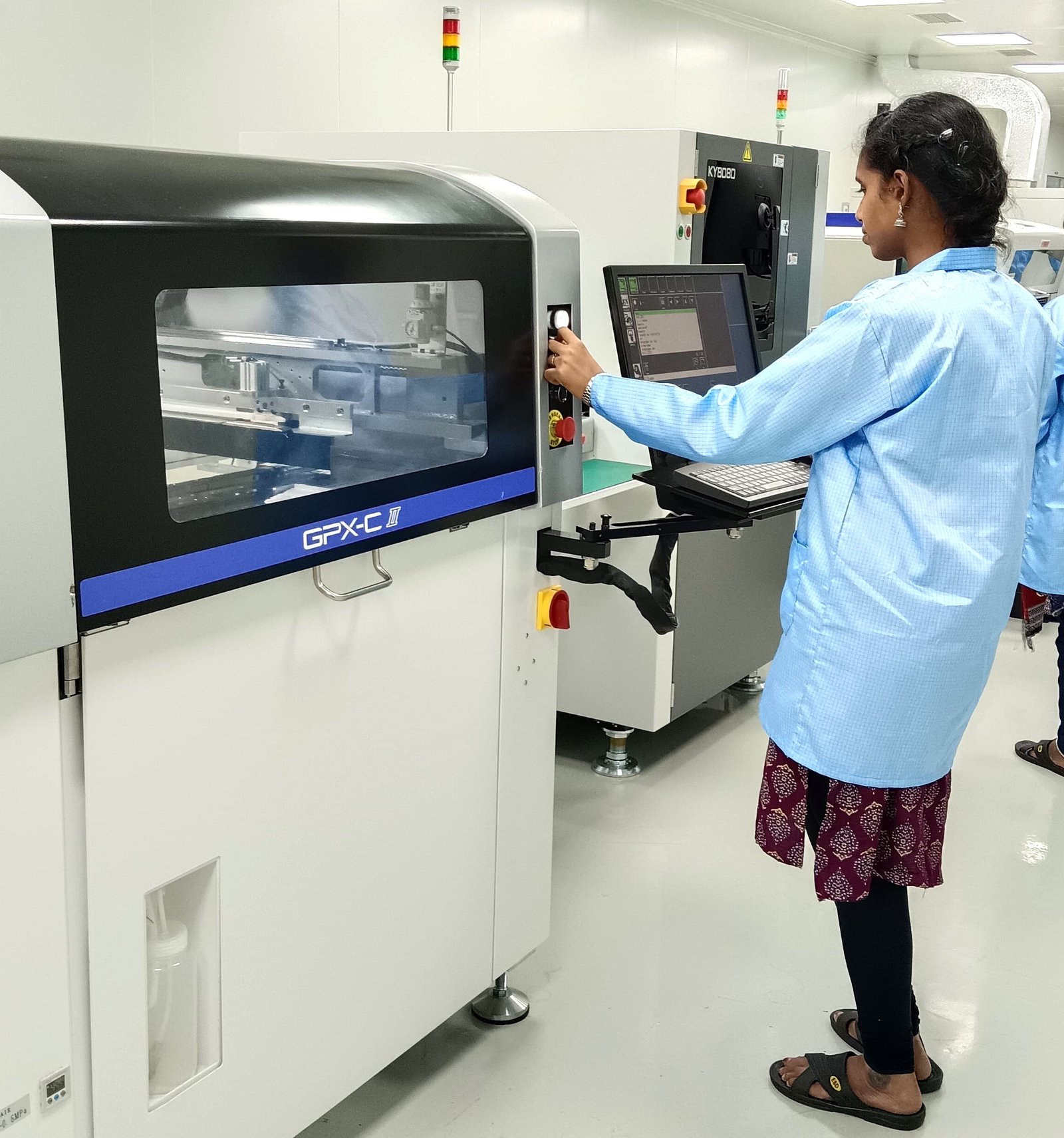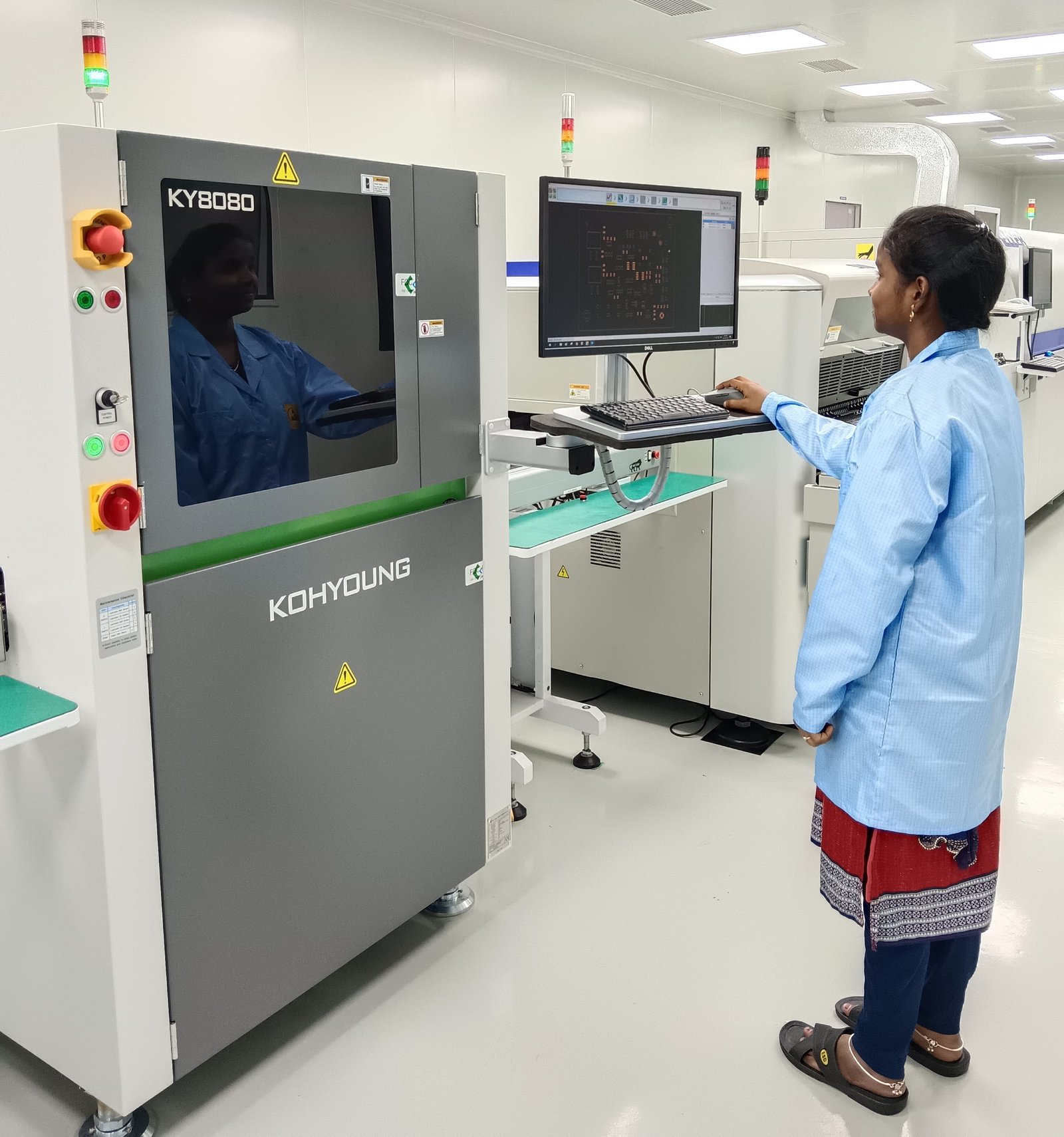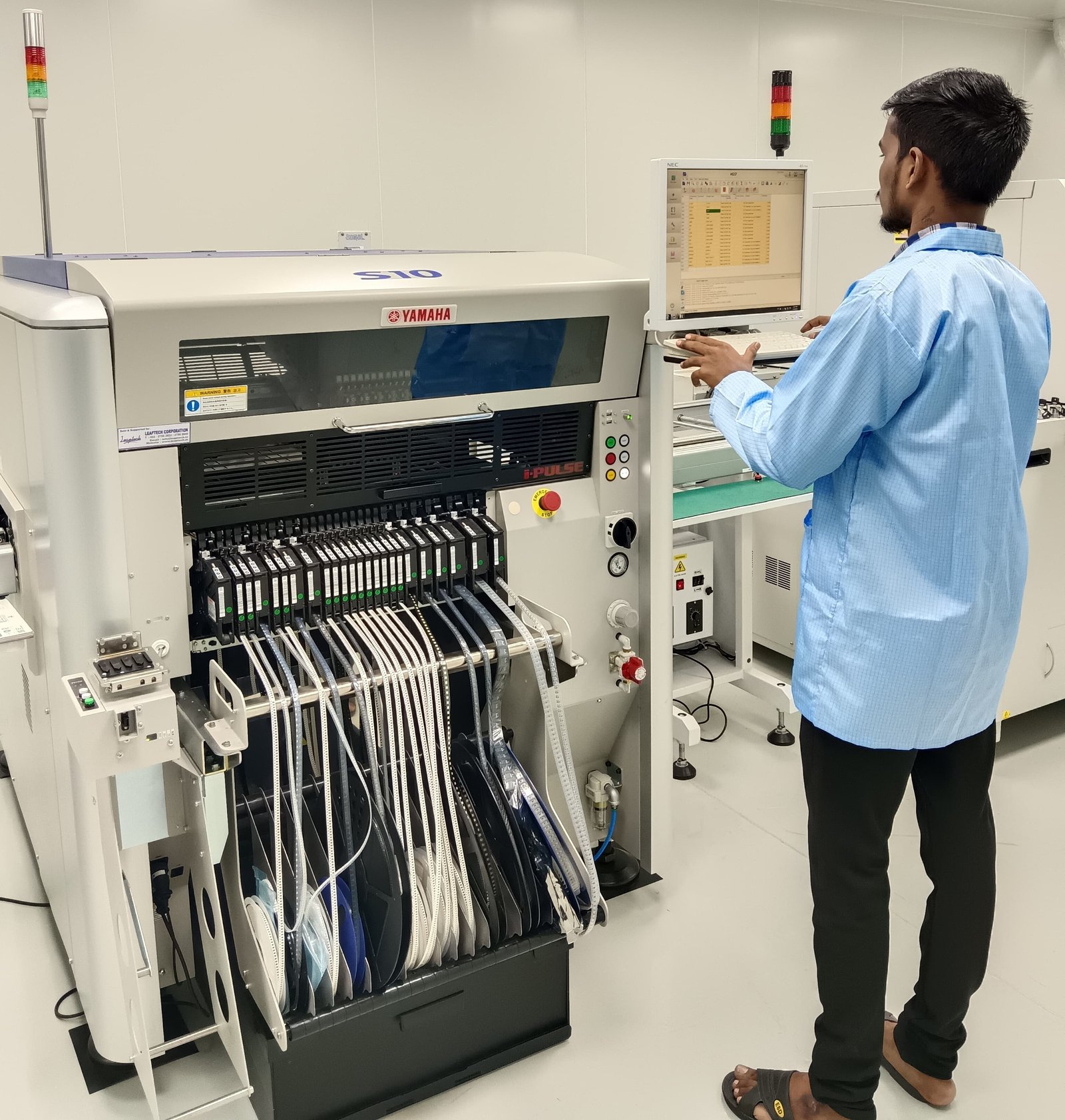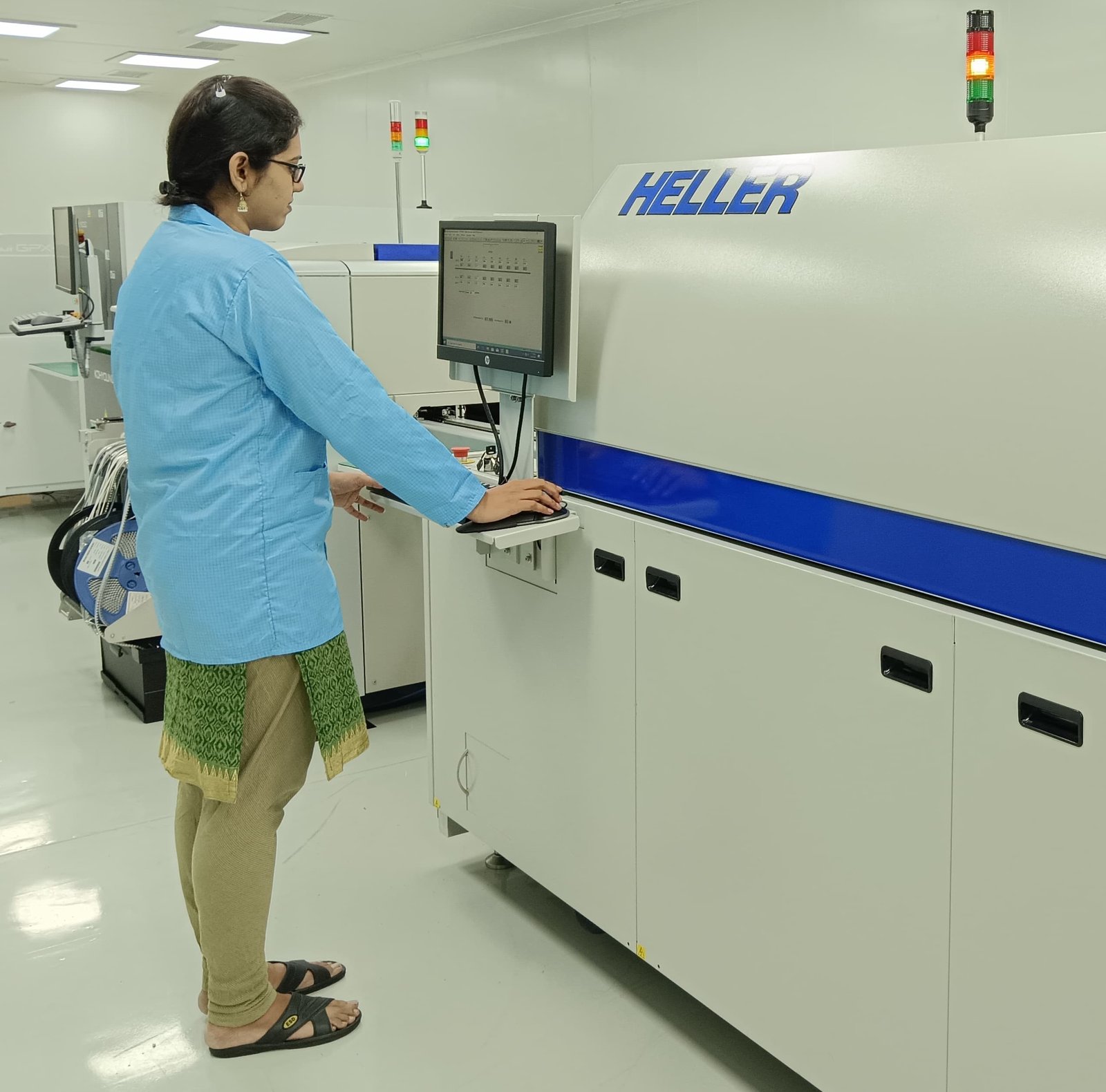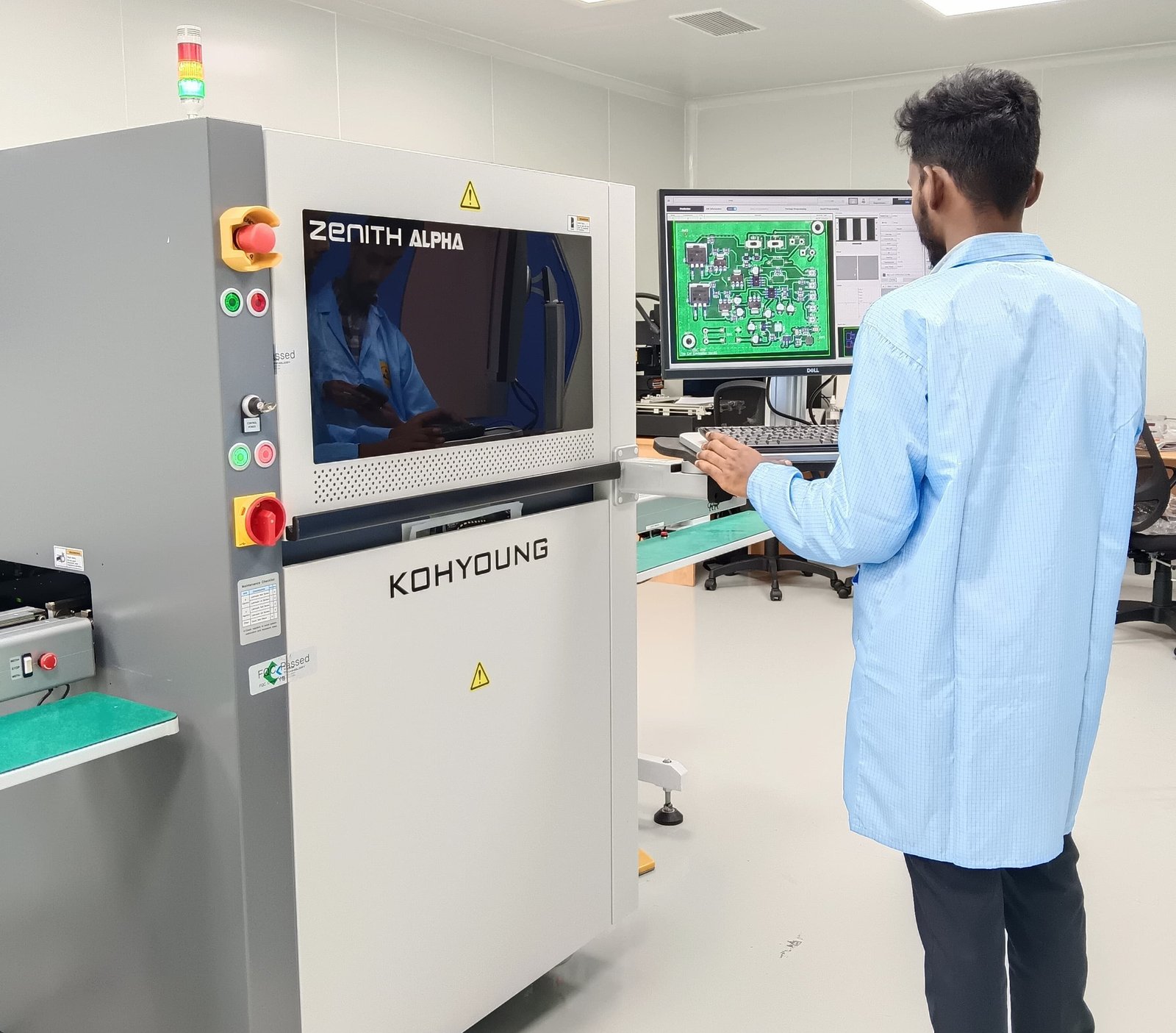SMT Fabrication
| • This is the first step in surface-mount assembly. The main purpose of this machine is to apply the solder paste to the PCB board using stencils and squeegee blades. |
| • It uses an automated control system to complete the printing task quickly and accurately. |
| • It uses stencils, solder paste and PCB boards. PCB board and stencil fiducial points very important the size of the fiducial points minimum 3mm from distance from edge of the PCB board |
| • We use a stainless steel material stencil. Because it takes one stencil more time, it gives accurate, smooth and sharper edges. Our stencil size is 29/29 inches with a frame. |
| • In our machine, there are two squeegee blades: one is the front squeegee and another is the rear squeegee. Its angle is 45°. |
| • Conveyer size 450mm. |
| • We use lead free solder paste. |
| • A solder paste inspection machine (SPI machine) measures the height, volume, and shape of paste deposits. |
| • We need Gerber file and cad Data |
| • It also computes stencil offsets and finds defects in your PCBs. |
| • RING LIGHT: The outline of only solder paste is extracted with a ring-shaped (360°circle) RGB light source projecting against the inspection object (solder). This method of inspection by 3D for only solder paste in existing areas achieves more reliable inspection |
| • PROJECTORS: A camera, which is positioned in the vertical direction, captures inspection object (solder) images with stripe pattern light by twin projectors* from the cross angle |
| • Its maximum paste height is 400 micrometers. |
| • Its minimum paste deposit is a rectangle of 150 micrometers and a circle of 200 micrometers. |
| • It is automated equipment that places surface-mount components, such as capacitors, resistors, and integrated circuits, onto printed circuit boards (PCBs) in the assembly of electronics. |
| • The components are feeded through the reels or trays. |
| • There are 36 front and 36 rear feeder stations. |
| • The component is picked up by the pneumatic suction nozzles of appropriate sizes. There are 24 different sizes of nozzles cab be used. |
| • We use different types of feeder sizes: 8mm, 12mm, 16mm, 24mm and 32mm. |
| • The components placement speed is 42,000 CPH (chip per hour) |
| • A reflow oven is a machine that is mainly used for the reflow soldering of surface-mount electronic components to printed circuit boards (PCBs). In commercial high-volume applications, reflow ovens have the shape of a lengthy tunnel with a conveyor belt that transports PCBs. |
| • The temperature of oven is around 350ºC |
| • The board with components placed on it and their solder pads are sent inside the reflow oven. |
| • Inside the oven, there are many heating zones with different temperatures. |
| • The board gets heated through these temperatures, and then the solder paste melts and joints the legs of the components to their corresponding pads. |
| • Finally, the board is sent to the cooling zone for solidification |
| • AOI is used to enhance inspection consistency and accuracy as well as reduce production costs and time. |
| • It measures the component’s height and width. |
| • It checks if the components are placed perfectly on their corresponding pads. |
| • It uses a 3D camera with 8 megapixels for inspection. |
| • We used cad xy data gerber data. |
| • It used to find accuracy errors like dimension error, solder fillet, pad overhang, coplanarity, bridging, and tomstone. |


